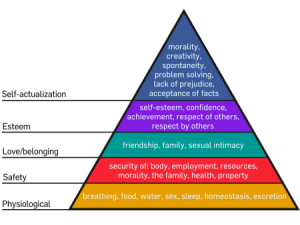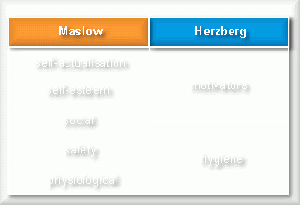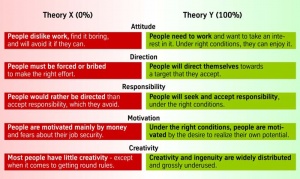Human Resources

Human Resources
Organizational Structure
The organizational structure refers to the way in which positions within the business are arranged. They have some key elements such as the span of control which refers to the number of subordinates working under a superior or manager. Other element is the hierarchy as it refers to the levels of management in the business, and the chain of command that is the way authority is organized.
- The organizational structure of the UWP Mission to Loyka is tall and centralized, with several levels of hierarchy and a narrow span of control. This means that the Commander, General Ron Meiri, replaced in 2011 by General Diane Pierce, is the manager that correspond to the higher level of hierarchy and has a span of control of 4 as she is responsible of the first regimen, the second regiment, the civil engineering group and the combat support group; these four correspond to the next level of hierarchy down the chain of command. Then the civil engineering group has a span of control of 2 as it is responsible for the civil engineering and the transportation, while the combat support group has a span of control of 3 as it is responsible for communications, combat support and medical support. Also, the first regiment and second regiment have a span of control of 2 as each one is responsible of their first and second battalions.Each battalion is divided into companies, companies into platoons, and platoons into squads. Being the squads the lowest level of hierarchy. This type of methods allows the leader of the organization to take over control and supervise in a more effective way their subordinates. This organization was not flexible, but it ensured that orders were clearly understood and always followed.
Delegation and chain of command
The chain of command: the way authority and power are passed done in a business. Delegation: A system whereby authority passes down from the top through a series of executive positions or military ranks in which each is accountable to the one directly superior.
- General Pierce delegated the responsibility for investigating the feasibility of the two projects down the chain of command to Colonel Michael Donovan, Head of the Civil Engineering Group. (51-52)
Personnel profiles
A personality profile is a management tool used to provide an evaluation of an employee's personal attributes, values and skills in order to maximize his or her job performance and contribution to the company.
- In the case of the UWP Mission, two important personnel profiles that can be identified are the ones of the General Meiri and the General Pierce. After regarding that the skills that the General Meiri possessed were not being effective to control the situation, the Headquarters had to find a specific leader that will guide correctly the Olive Hats. For example, the General Meiri had a profile more autocratic and rigid, on the other hand, as General Pierce had a situational leadership style, she was more flexible and conscient about the worker’s motivation; also she had experience of social marketing in previous UWP Mission that would help reduce the problems with the image of the troops. This personnel profiles had to be evaluated in order to select the General Pierce as the new leader of the “Olive Hats”, they noticed that she had the required skills and correct personal attributes in order to develop a well expected job. Never the less is important to take into account that all not only the personnel profiles of the leaders have to be evaluated, all the workers should have to present their profile in order to know if he can be recruited or not.
- Kos also should take into account the personnel profile of his possible employees if he is willing to expand its business, in order to have efficient and skilled workers that will perform a good job.
Labour mobility
The labour mobility regards in the extent to which the workers are able or willing to move between different jobs, occupations, and geographical areas. There are different types of labour mobility, one of them is the horizontal mobility which consist in verifying if there was a change in the result of the worker’s grading or status, if there was no change then a vertically mobility can be applied.
- This labour mobility can be seen in the case, because the UWP is planning to build a hospital or a university, but if there are not enough employees in the region, then the labour mobility should be necessary. The fact that the doctors have credentials that allow them to have an easier labour mobility, affects Loyka because they will be having a lack of human resources in the country. When the civil war broke out, most of the Loykese doctors who could speak English left for countries such as Canada, the United Kingdom, and the United States, where foreign doctors could easily obtain work visas and employment opportunities. As a result, there was a significant decrease in the number of doctors in Loyka.
- They should take into account if the workers are willing to move from their original geographical region into Loyka, also if Loyka habitants are willing to accept foreign doctors or teachers into their small country.
Workforce planning
It is the process of determining the labour needs of the business now and in the future and how to achieve labour targets. The project of constructing either a university campus or a hospital would require careful workforce planning and training: some peacekeeping troops would need extra training in construction skills and safety procedures. (91-93)
- Moreover, because of the civil war, the country desperately needed engineers, school teachers, nurses and many other highly skilled professionals to help rebuild the social infrastructure.
Recruitment and selection
Recruitment and selection is present in a section of the case.
- If the main objection of the local population was the concern that most of the doctors would be male, the UWP, he argued, should do everything it could to recruit female doctors, even if only for the short term. So even though different factors are being taken into account by the managers of the project, most of the recruitment must be specialized on the preferences of the loykese, this is because the project is mainly for them, if the loykese approve the project then the mission that was established by the leader will be accomplished, the acceptance of the Olive Hats will be successful. Depending on whether a hospital or a university will be constructed different factors would need to be taken into account. The university will need to employ teachers that will be part of the staff, loykese don’t seem to have a problem with the recruitment of males or females, in the other hand, the staff of the hospital will need to be mainly people from loykese, this is because of the idea that they have about foreign doctors treating people from the country, especially male people.
Motivational theories
Maslow

Maslow’s theory consist of two parts: the classification of needs and how these classes are related to each other. The classes of needs are:
- physiological needs (food, drink, rest and activity)
- safety needs (protection from dangerous situations or threats)
- love and belonging (receiving and giving love, affection, acceptance, and trust)
- esteem needs (gaining the esteem and respect of the others)
- self-actualisation (realising your full potential)
The UWP Mission is not achieving the class of esteem needs for their troops because there is opposition to the UWP presence grew as did violence against the troops. Moreover, “the Olive Hats” in Loyka started to resent being there and motivation was beginning to deteriorate. They felt unappreciated by the local population, whom they believed they were assisting by maintaining order, peace and security. (27-30)
Herzberg

Herzberg’s theory shows two factors that influences in the causes of feelings of satisfaction or dissatisfaction at work. This factors are motivators or hygiene factors.
The motivators give workers job satisfaction, such as recognition for their effort. The hygiene factors can lead to workers being dissatisfied, such as pay and conditions, improving these factors should remove dissatisfaction. Because Herzberg’s ideas are often linked with job enrichment, this theory is applied with the creation of a new hospital or a new university campus that would remotivate the The Olive Hats by providing a change of routine, by giving them a sense of achievement, and by buildingpositive relationships with the local population. (47-49)
Taylor
Taylor’s Scientific Management says that money is what motivated people at work. Taylor felt that workers should receive a fair day’s pay for a fair day’s work, and pay should be linked to output through piece rates. Although that this may be a good motivator for the soldiers, the salaries aren’t set by the colonel, they are set by the UWP itself, so financial rewards are not an option that could be taken to motivate workers.
McGregor

THEORY X: assumes employees are inherently lazy and will avoid work if they can and that they inherently dislike work. Hierarchical structure is needed with narrow span of control at each and every level. (GENERAL MEIRI)
THEORY Y: employees may be ambitious and self-motivated and exercise self-control. It is believed that employees enjoy their mental and physical work duties. They believe that the satisfaction of doing a good job is a strong motivation.
- In the case both McGregor’s theories are presented with the last and actual Commander, General Meiri, using theory X, and General Diane Pierce, using theory Y. The theory X can be seen applied with the General Meiri, because he had an autocratic style of leadership, structure in which he obtained a narrow span of control among the soldiers. He used a very clear hierarchical structure, so most of this actions correspond to the theory X of motivation.
Glossary
| Concept | Definition | Application to the case |
| Autocratic leadership style |
|
|
| Chain of command |
|
|
| Empowered |
|
|
| Financial rewards |
|
|
| Levels of hierarchy |
|
|
| Matrix structure |
|
|
| Motivation |
|
|
| Non-financial motivational methods |
|
|
| Organizational chart |
|
|
| Organizational structure |
|
|
| Part-time workers |
|
|
| Situational leadership style |
|
|
| Span of control |
|
|
| Training |
|
|
| Workforce planning |
|
|
Topics
- Business Organization and Environment
- Human Resources
- Accounts and Finance
- Marketing
- Operations Management
References
If Any...